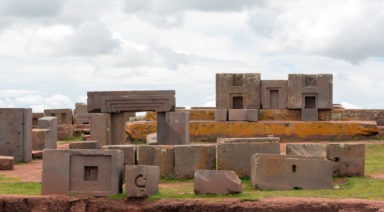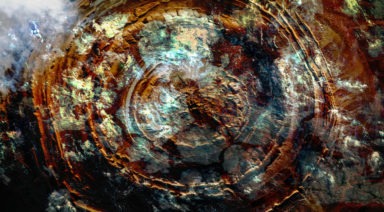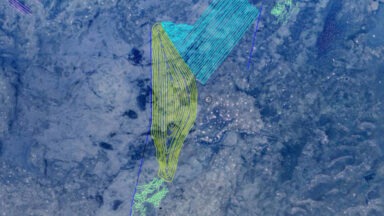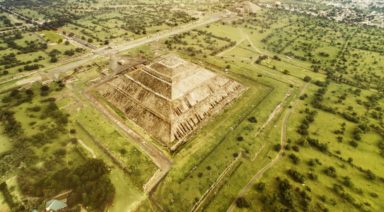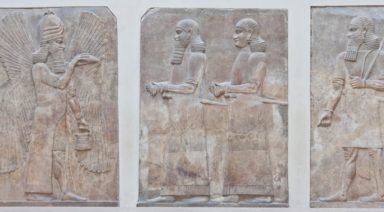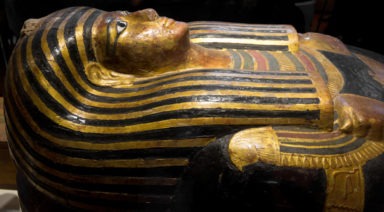The Megalithic Baalbek Temple; An Ancient ‘Landing Place?’

When one considers the mysteries of ancient megalithic ruins, famous sites such as Stonehenge, Palenque, and Göbekli Tepe come to mind, though less often are the temple grounds of Baalbek mentioned in the same breath. There, perched 3,000 feet atop a sacred hill in Lebanon’s Beqaa Valley, lay the ruins of one of the world’s most massive megalithic sites, containing some of the heaviest quarried stones of antiquity. Still, little is understood of its construction.
Baalbek is located in the northeast of Lebanon, about 60 miles outside of Beirut, making it a difficult place to travel these days. But during the time of Roman imperialism, it was known as Heliopolis, the “City of the Sun,” founded by Alexander the Great in 334 BC. Baalbek became the site of Roman temples dedicated to Jupiter, Bacchus, and Venus, based on a popular cult devoted to this famous triumvirate.
Though the foundational stones and the location in which they were quarried have been known for some time, the site’s biggest megalith was discovered just recently. Weighing in at a whopping 1,620 tons, it outweighs another mysteriously gargantuan monolith from the same quarry, known as the Pregnant Mother Stone, by 400 tons.
The remains of the Roman temple rest on a stack of three, 900-ton megaliths known as the trilithon. Moving the trilithon into place today would require the effort of some of the world’s most powerful cranes, yet in the time of its alleged construction, the stones were somehow situated through primitive means so precisely, that one has difficulty slipping a sheet of paper between them today.
To put the sheer weight of these stones into perspective, one might compare them to the stones used to construct Stonehenge, which weighs in at around 25 tons each – a fraction of the trilithon stones’ weight.
Researchers including Graham Hancock, find this difficult to comprehend, leading him to believe in the possibility that an antediluvian, or pre-flood, civilization with advanced technology may have been responsible for the trilithon, upon which the Romans later constructed their temple. In fact, Hancock says he believes the trilithon maybe 12,000 or more years old, predating Roman construction by around 10,000 years.
The site remained a sacred place for a number of cultures and religions throughout its history and is believed, even by mainstream archeologists, to have been inhabited for the past 8-9,000 years. After the fall of the Roman Empire, it became a site of importance for Pagans, Christians, and later Muslims when the Ottoman Empire controlled the region.

The Pregnant Mother Stone at Baalbek
Baalbek Aliens
Due to the baffling size and masonry of the stonework at Baalbek, the site has sparked theories among proponents of the ancient astronaut theory due to interpretations of ancient Sumerian texts which referred to Baalbek as “the landing place.”
Some believe the area may be located within specific geomagnetic energy fields, where resonant electromagnetic energy was harnessed to erect the structure. Advocates of these theories, including Freddy Silva propose the possibility that Baalbek may be situated along a special energetic field due to quartz contained beneath the Earth’s surface. The quartz in the area may have worked in conjunction with the massive stones at the quarry alleged to contain piezoelectric properties, possibly aiding in the erection of the Baalbek monoliths.
Others believe it was simply constructed by an ancient civilization with advanced technology. In fact, mainstream archeology doesn’t necessarily agree that the trilithon was constructed by the Romans, but potentially some prior civilization. And if this was the case, who were these people able to move such monoliths, before the engineering brilliance of the Roman empire?
For more info on some of the world’s most confounding megaliths watch this episode of Beyond the Legend with Erich Von Däniken:
How the Mystery of Puma Punku Rivals the Pyramids

Pumapunku, also spelled Puma Punku, is the remains of an Incan holy site in the jungles of Bolivia that has attracted much attention as of late. The name means “door of the puma,” and as far as archaeologists know, Puma Punku was a thriving, ancient town originating somewhere around 500 and 600 C.E.
Here we are, a century and a half later, and irrepressible rumors continue to grow that Puma Punku’s massively heavy stone block structures were cut so precisely that highly advanced, ancient technology seems to be the only explanation for their incredible stone masonry.
The Tiwanaku (Tiahuanaco) civilization, which predated the Inca, likely influenced them through advanced stonework and agricultural practices. Although the Tiwanaku had declined before the Inca rose to power, the Inca may have adopted and adapted their techniques.
Located 45 miles west of the modern-day city of La Paz, Puma Punku is situated in the still-thriving city of Tiwanaku, high upon a desert plateau of the Andes Mountains, at an altitude of more than 12,000 feet. Tiwanaku is significant in Inca traditions, where the world was once believed to be created.
In this isolated part of the world, the ruins of Puma Punku showcase smooth stone structures made from large andesite and sandstone blocks, featuring precision cuts, clean right angles, and expertly fitted joints without the use of mortar. The megaliths are among the largest on earth, with some weighing several tons. While many of the structures are still standing centuries after their inhabitants disappeared, most of the buildings are scattered and broken around the area, leaving researchers to wonder what possibly could have moved around impossibly heavy buildings.


